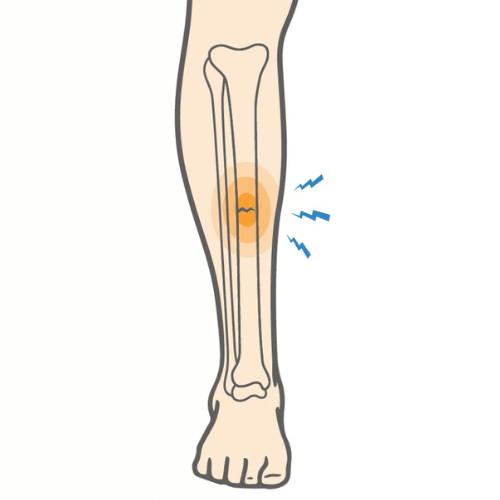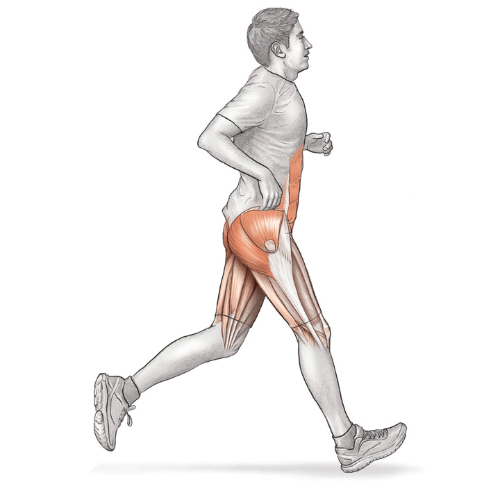
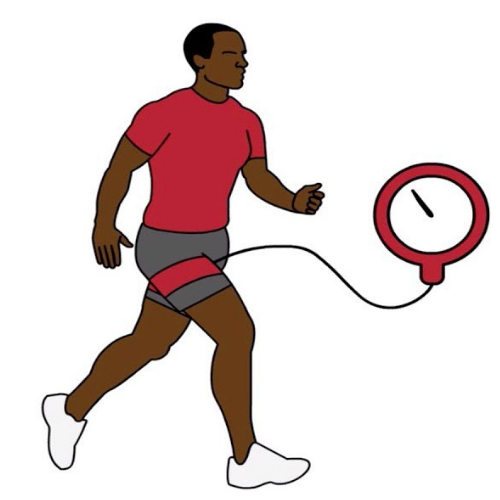

Blood flow restriction (BFR) training, also known as occlusion training, is a training method that involves restricting the blood flow of a limb in order to stimulate muscle growth and strength changes using lighter loads.
The history of blood flow restriction can be traced back to 1970’s Japan, where it was known as KAATSU training. As more research on its effects surfaced in the late 1990’s, it has seen a resurgence of interest in its application in musculoskeletal rehabilitation.
Typically, to stimulate muscle strength and growth (known as hypertrophy), it’s important to lift weights at an intensity greater than 70% of your one repetition maximum. However, this is not always feasible in elderly populations and those recovering from injury or surgery. Blood flow restriction training applies a pressurized cuff around the target limb to prevent blood flow OUT of the muscle (venous flow) while still allowing blood flow INTO the muscle (arterial blood flow). This creates a metabolically rich environment that is favourable for muscle changes without the need to lift heavy weights. In fact, lifting low loads as little as 20% of your one repetition maximum while the cuff is inflated is sufficient to induce these muscular changes.
The mechanism of action by which BFR causes its effect is still unclear. However, two main factors have been shown to induce these changes: metabolic stress and mechanical tension.
When the pressurized cuff is applied to the limb during exercise, the metabolites that normally get cleared from the muscle by the venous system are blocked, causing an accumulation in the muscle. These metabolites, such as lactic acid and reactive oxygen species (ROS), create an anabolic environment that is favourable for muscle growth. Occluding blood flow also reduces the oxygen content available to the muscles. An environment with reduced oxygen (known as hypoxia), preferentially activates type II muscle fibers. These fibers are normally recruited only under heavy loads, such as during heavy resistance training (>70% of your max). Other metabolic effects include blood pooling, cellular swelling, angiogenesis and more. The combination of mechanical tension, created as you perform an exercise, and a metabolic environment are what make this method effective. Essentially, blood flow restriction training creates an environment within the muscle that allows for similar muscular changes as heavy resistance training.
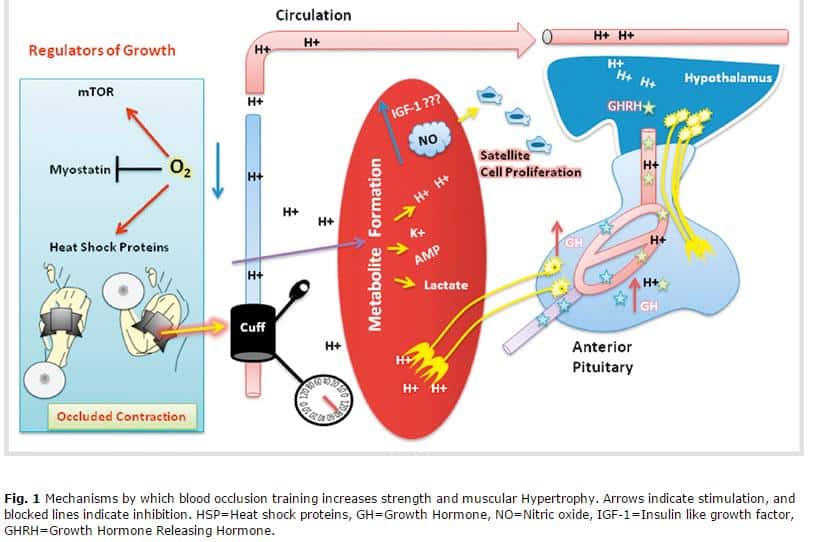
These positive results have been replicated in a number of studies, including systematic reviews. It is important to note that we use BFR in very specific cases that have been proven to be effective. Although training with lighter loads combined with BFR is similar to heavy resistance training, it is unlikely that it is equally effective. Some studies have shown that fewer muscle units are recruited in low load blood flow restriction training compared to high load resistance training. Our philosophy is that if you can lift heavy weights, then blood flow restriction training is not needed.
The experience is similar to wearing a blood pressure cuff, however the pressure levels do not get to the point where blood flow is completely restricted (the pressure values stay between 40-90% of the arterial occlusion pressure). The correct cuff pressure is automatically configured using advanced algorithms within the device.
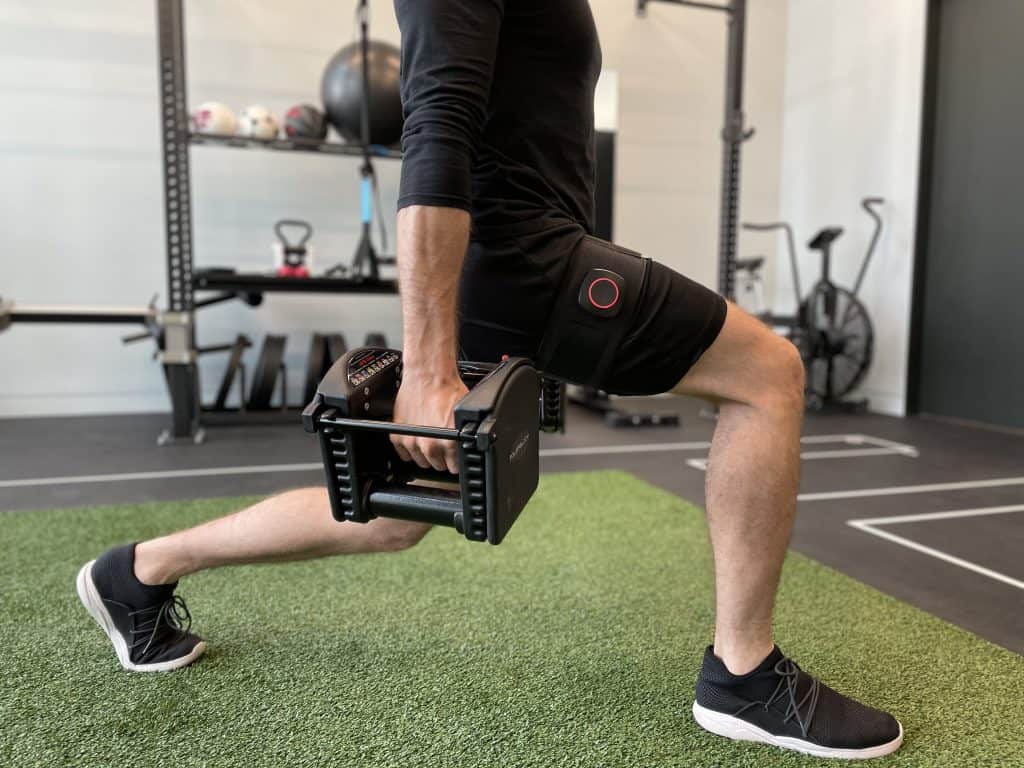
Most studies use a high repetition, high volume protocol combined with some type of cardio or resistance training exercise such as walking or squatting. A typical training session involves applying the pressurized cuff and leaving it inflated for the duration of the exercise, including rest periods. Most programs use a 30-15-15-15 repetition protocol with 30 second rest periods, lifting ~20% of your one repetition maximum for that specific exercise. To be most effective, these sessions are repeated 2-5x per week for 4-12 weeks. While this may seem like a lot of sessions, it is important to put this in perspective for someone undergoing rehabilitation after an injury or surgery. The detrimental effects of disuse are well known and it can take many months to return to pre-injury levels. Blood flow restriction training can slow and potentially reverse these detrimental effects, saving time and effort down the road.
The overall risk of blood flow restriction training is on par with general resistance training. A study of 13,000 individuals concluded that BFR is safe and effective when properly performed. A low incidence of adverse events has been reported such as small blood vessel hemorrhage (i.e. redness/bleeding under the skin), sensory disturbances, and lightheadedness.
Despite its proven safety in generally healthy individuals, we take precautions with anyone who has a cardiovascular condition. When in doubt, check with your family doctor.
There is increased excitement, both in the clinical and research community, of the positive outcomes of using blood flow restriction training in a rehabilitation setting. We have found success using it in everything from ACL rehabilitation patients to elderly populations. As more research is published, we expect to see these devices start to become more ubiquitous in rehab clinics.

